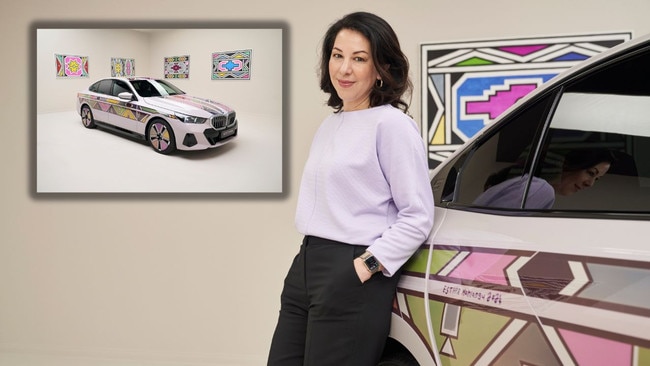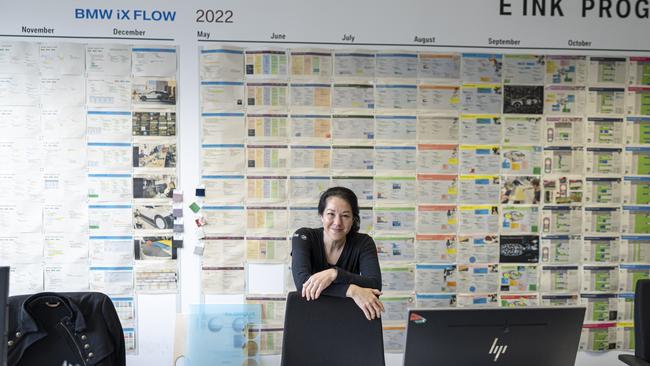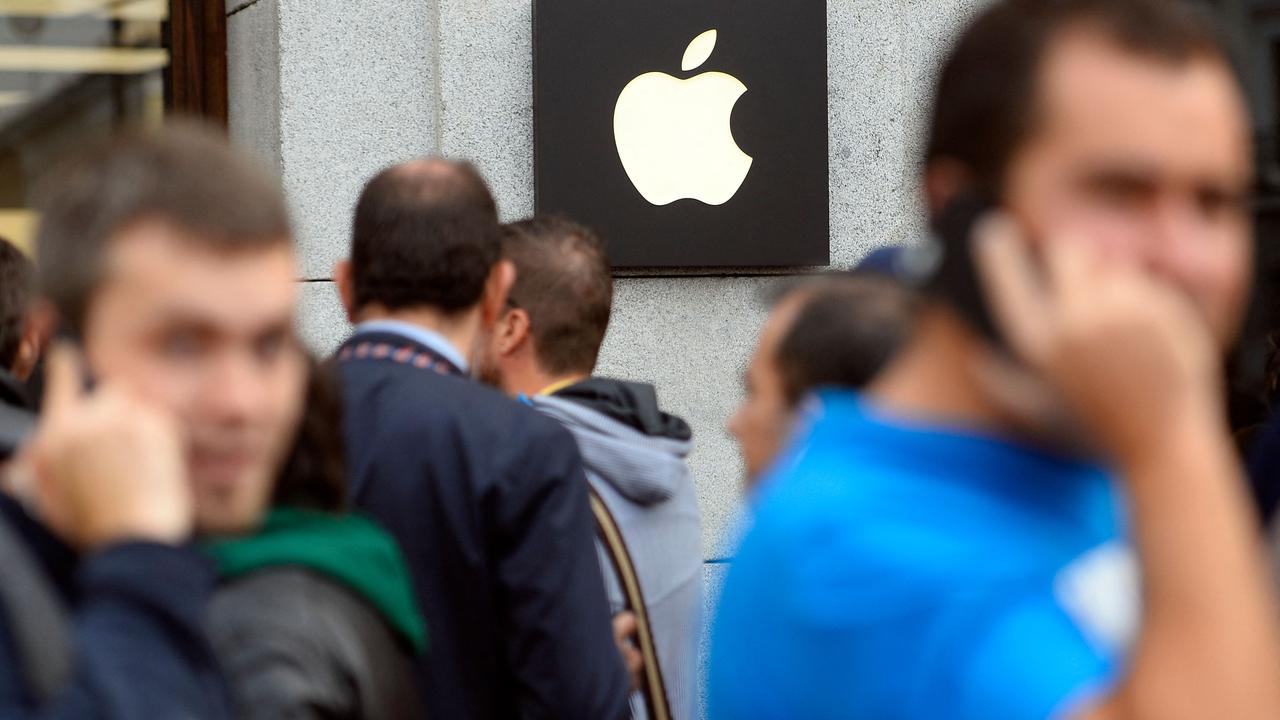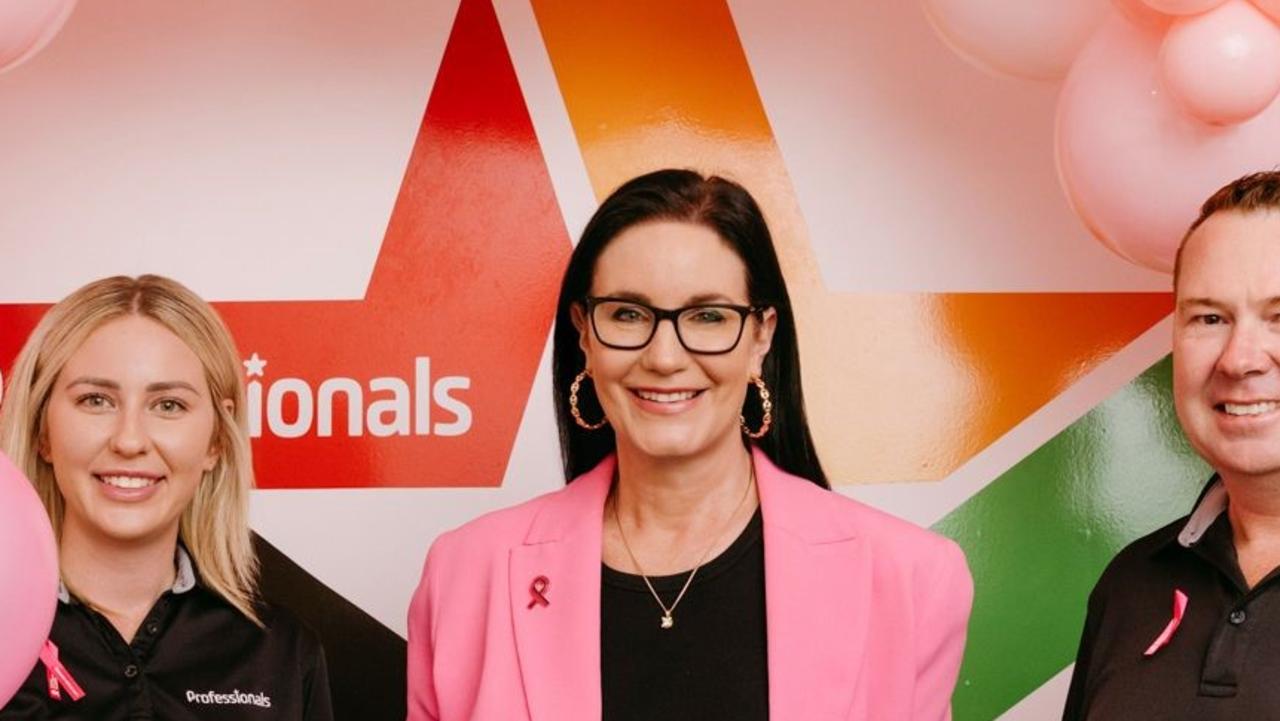BMW taps Australian engineer to become its real life ‘Q’ from James Bond
Australian Stella Clarke is using E Ink technology in a way that’s set to cause a revolution in the automotive industry – taking inspiration from James Bond.

Business
Don't miss out on the headlines from Business. Followed categories will be added to My News.
Lovers of the James Bond film franchise will be familiar with the quartermaster dubbed Q, who provides the series with its famous gadgets. In a case of life imitating art, there’s a real-life Q in Munich – Stella Clarke, an Australian who now works at BMW headquarters in Bavaria.
Clarke has developed a technology that evokes scenes similar to those in Pierce Brosnan’s last Bond outing – the 2002 film Die Another Day – when Q gives Bond an invisible car. While she is yet to make one of the brand’s luxury vehicles disappear, Dr Clarke can make it change colour or display a variety of different patterns at the press of a button, creating the perfect getaway car for the fictional spy.
This is an article from The List: Innovators 2024, which is announced in full on October 18.
Originally from Maroubra in Sydney’s eastern suburbs, Dr Clarke took her inspiration from E Ink, the technology that creates paper-like displays for Amazon Kindle and Kobo e-readers. And just as it allowed readers to enjoy novels on those devices, Dr Clarke believed the technology could solve a key problem in the automotive industry – the inability to read information on displays.

“In the beginning, it wasn’t about a colour-changing car,” she says. “It is often the case with innovation that it evolves with time, and this was no exception.
“It was pretty much using E Ink in the cockpit to solve problems, mostly when the sun is shining really brightly. It’s hard to see displays that are lit because the light will always compete.
“So the first idea was E Ink would be a wonderful way to show information on the interior of a car, and it would look wonderful in sunlight. It evolved from there.”

Dr Clarke described it as a “hobby project” at the time, but it didn’t take her long to start pitching her idea to BMW executives.
“At BMW, you can have an idea, pitch it internally, and if a manager likes it, they’ll give you a little bit of money,” she says. “So I got a few thousand euros, which I got to purchase more E Ink … and I did an awful lot of prototyping myself.”
Soon, Dr Clarke was exploring beyond the interior of the car to the exterior, working out how E Ink could be applied to panels to change their appearance.
BMW’s head office organised a mini staff expo to showcase different ideas, but within days it had been cancelled. It was March 2020, and Covid-19 had hit. “I ended up flying home [to Australia] for a scheduled sabbatical,” Dr Clarke says. But she remained determined to explore how E Ink could transform the automotive sector. “I created a video pitch,” she says. “It was a really bad, embarrassing video pitch, where I talked to the camera and explained why E Ink is so awesome.”

But the head designer of the BMW iX, one of the company’s electric vehicles, saw the technology’s potential and E Ink was adopted into a concept car model.
In 2022, the BMW iX Flow showcased how a car could change from black to white, before a 2023 unveiling at the world’s biggest consumer electronics show in Las Vegas, showed how it could transform to full colour.
To achieve this feat, Dr Clarke had to solve a big problem: how to transfer E Ink from 2D to 3D. “Cutting it, heating it and lasering it tends to lead to shorting of the material,” she says. “It ended up being harder than I expected.”
Instead, she developed a solution to wrap it around panels in a similar way to how wood is made flexible using many small cuts.
BMW is now considering how E Ink can be transferred to production cars. “It’s important for us not to just make a cool concept for people to like, but to get it into consumer hands,” Dr Clarke says. “There are issues such as rain, temperature … These are all challenges we are in the process of answering, some of which we answered in the last car.
“I see it moving into production, but it’s also something that will take some years. I wouldn’t say too many, but it will take some. The automotive tests are quite extreme – for example, the UV test itself, for one interaction, takes six months to do because you’re simulating a lifetime of sunlight.
“Automotive is renowned for having very high standards for robustness, and so that’s going to hinder us from bringing it quickly out of concept.”
More Coverage
Originally published as BMW taps Australian engineer to become its real life ‘Q’ from James Bond




